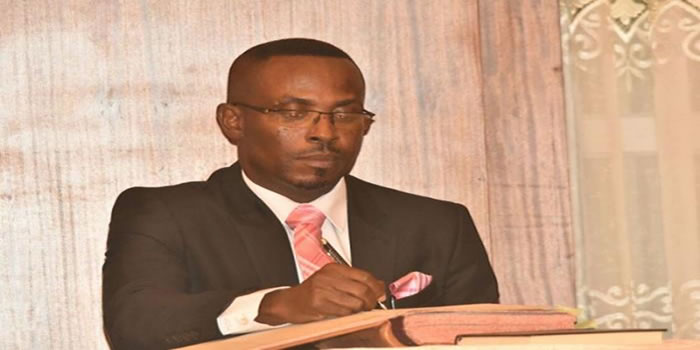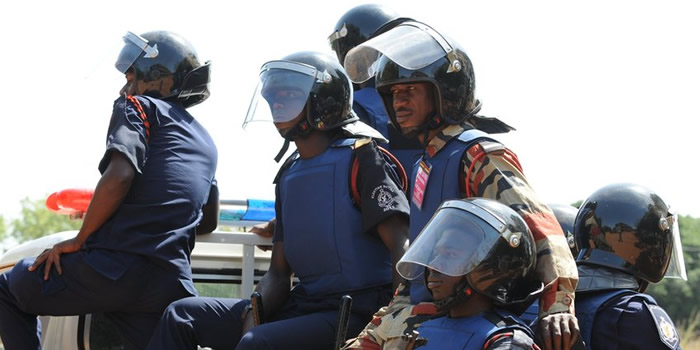

According to the 2010 Population and Housing Census (PHC), the Municipality had a population of 68,597 which is made up of 32,795 males; representing 48% and 35,802 females; representing 52% and representing 3.1% of the total population of 2,201,863 in the Central Region.
The population above 18 years is 41,882; representing 61.1% out of which the male population is 19,623 (46,9%) and the female population is 22,259 (53.1%). It had 17,121 households and with an average household size of 3.6. The urban population constitutes 63, 969; representing 93.3%, with 4,628 representing 6.7% residing in the rural areas.
In 2000, the population was 46,574 made up of 21,346 (45.83%) males and 25,508 (54.77%) females. In 1970 and 1984 the population of the Municipality was 32,315 and 32,523 respectively. The growth rate for the Municipality for 2000 and 1984 represents 2.2%. Winneba with a population of 40,017 is the only urban settlement. Other big settlements in the Municipality are Sankor, Gyangyanadze, Gyahadze, Nsuekyir, Ateitu, Osubonpanyin and Warabeba.
Age-Sex Structure of the Municipality
The age structure and the sex composition of the population of the Municipality follow the National distribution pattern and this is depicted in Table 2.1.The distribution of the population revealed that there are more females (51.2%) than males (48.8%) with a sex ratio of 95.2 males to 100 females. The dependency ratio which is the ratio of persons in the “dependent” ages (population under 15 years and 65 years and older) to those in the “economically active” ages of 15-64 years.
The Municipality had a dependency ratio of 61 implying that every 100 persons aged 15-65 support about 61 dependants.
The proportion of the population between 15 years and 64 years in the Municipality is 62.1 percent. The proportion of the population under 15 years is 33.1 percent whilst 4.8 percent of the population is 65 years and older. At the locality level, the municipality had urban and rural dependency ratios of 59.0 and 96.4 respectively which implied that there are more dependants in the rural localities than the urban areas.
The dependency ratio among female population is slightly higher (61.4) as compared to the male dependency ratio of 60.6 in the Municipality. igure 2.1 shows the distribution of each 5-years age-sex contribution to the total population of the Effutu Municipality. The population distribution depicts a typical pyramid structure that is characteristic of population that can be described as youthful. A large concentration of the age cohort in the pyramid is concentrated at age 20-24 years for both sexes.
The pyramid shows that a large new cohort is born every year as displayed at the bottom of the pyramid (aged 0-4 years). As cohorts aged, they inevitably lose members either through death or migration or both. This is shown by narrowing of the population pyramid as it peak and the peaking accelerates after 45 years.
The phenomenon also reveals that there are more males born at the age cohort 0-4 (6.2%) than females (6.1%) of the same category. However, for both sexes, more females than males survive as they progress in ages though more males are born than females in the municipality. he only exception where there are more males than females is the age group 25-29 years where the proportion of males is 39.2 percent and the females is 35.7 percent.
Policy Implications
From the analysis above, the major issues identified include;
1. High dependency ratio (61%)
2. There are more females than males (51.2% years. 48.8%) with sex ratio of 95.2
3. The population is more youthful (aged 20-24) in the Municipality
4. More males are born than females
5. Females have higher survival rate than males
6. The aged category (64+) constitutes 5% of the total population
7. There are more female aged (3%) category than males (2%)
8. There are more (90%) aged persons in the urban locality than rural areas
Policy Interventions
The following are proposed policy intervention to addressing some of the above policy issues
1. Promotion of local economic activities to leverage the economic burden of the working class
2. Interventions such as School feeding progarmmes, capitation grant, free exercise books, free school uniforms and sandals should be provided and sustained to encourage the youth to enrolled and retained in schools.
3. Scholarships should be provided for needy students
4. Support and roll out more modules under Ghana Youth Employment and Development Agenda (GYEDA) in the Municipality e.g Youth in agri-business, apprenticeship, vocational and skill development
5. Immunize all children under 5 years
6. Social protection programmes for the aged e.g free NHIS registration
7. Social welfare programme for the aged be provided in the urban locality.
Gender
In recent times, most especially in the developing countries such as Ghana, gender inequality has been a major obstacle to these societies. Study has proven that women are not valued in many such communities and they do not get equal chances as men.
Also, in terms of social power, it is believed that women live in the men’s world and as such have no right. Gender mainstreaming is the process of assessing the implication for women and men of any planned action, including legislation, policies or programmes in any area and at all levels to make gender more sensitive.
As required by the guidelines in the preparation of the District Medium Development Plan under the Ghana Shared Growth and Development Agenda (GSGDA), the Municipal Assembly is committed to Mainstreaming Gender issues in all the development activities of the Municipality. This is also in fulfillment of the United Nations Millennium Development Goals (MDG’s); goal number 3- “promote gender equality and to enhance economic and social participation of women, above all concerning education.
Gender mainstreaming is therefore aimed at promoting gender equitable planning, programming and decision making to ensure sustainable development in the Municipality.
Sex Segregation Of The Population
In 2010, the Municipality had a population of 68,597 which is made up of 32,795 males; representing 48% and 35,802 females; representing 52%.
In 2000, the Municipality had a population of 46,574 made up of 21,346 (45.83%) males and 25,508 (54.77%) females.
GENDER DISTRIBUTION OF FORMAL EMPLOYEES IN THE MUNICIPALITY BY CATEGORIES (HUMAN RESOURCE ANALYSIS)
Senior Staff Male = 18
Senior Staff Female = 6
Age Distribution
20 - 35 = 38
36 – 45 = 43
46 – 55 = 26
56+ = 13
Date Created : 11/16/2017 6:23:06 AM












 facebook
facebook
 twitter
twitter
 Youtube
Youtube
 +233 593 831 280
+233 593 831 280 0800 430 430
0800 430 430 GPS: GE-231-4383
GPS: GE-231-4383 info@ghanadistricts.com
info@ghanadistricts.com Box GP1044, Accra, Ghana
Box GP1044, Accra, Ghana